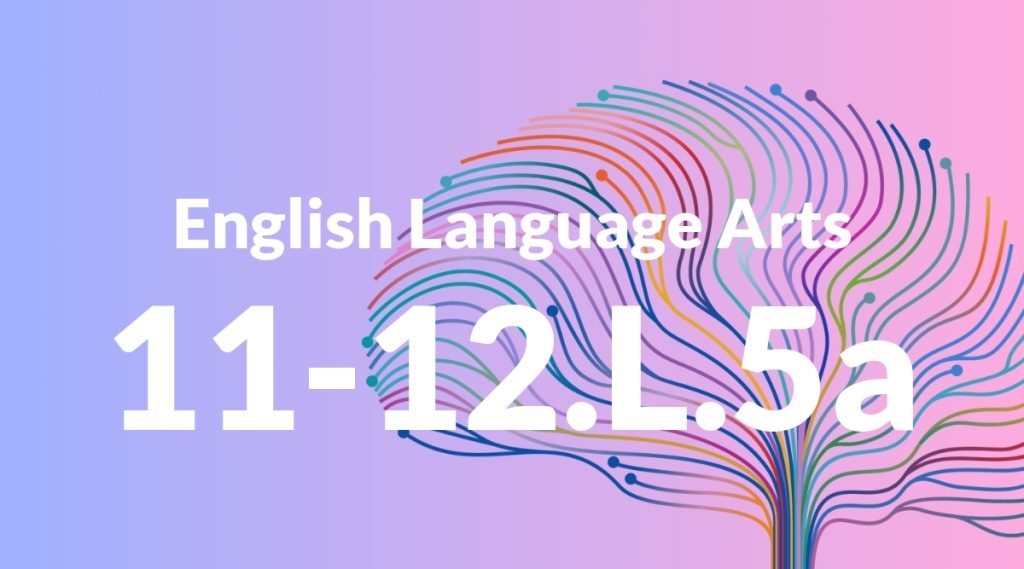Standard: 11-12.L.5a – Interpret figures of speech (e.g., hyperbole, paradox) in context and analyze their role in the text.
Grade level: Grade 11-12
Subject: English Language Arts
Domain: Language
Teacher Overview
This standard focuses on students’ ability to interpret and analyze figures of speech within texts. Understanding these literary devices is crucial for deep comprehension and appreciation of literature and rhetoric. This skill also enhances students’ own writing and communication abilities. Students should already be familiar with basic literary devices and have foundational analytical skills. Reviewing common figures of speech and practicing simple text analysis can help prepare students for this standard.
Mastering this standard will enable students to enhance their writing and analytical skills. They will be able to recognize and use figures of speech effectively, contributing to more nuanced and sophisticated communication.
Common Misconception 1
A common misconception is that hyperbole is meant to be taken literally. This misunderstanding can lead to confusion when interpreting texts. Hyperbole is an intentional exaggeration used to emphasize a point or create a specific effect.
Intervention 1
Provide clear examples of hyperbole in various contexts, and contrast them with literal statements. Encourage students to create their own examples to demonstrate understanding.
Common Misconception 2
Another misconception is that paradoxes are just contradictions with no deeper meaning. In reality, paradoxes often reveal complex truths and require careful analysis to understand their significance.
Intervention 2
Use guided practice to analyze paradoxes in different texts. Discuss the deeper meanings and implications of these paradoxes to help students grasp their importance.
Prerequisite Knowledge
Students should have a basic understanding of common literary devices and figures of speech, such as similes, metaphors, and personification. They should also be familiar with basic analytical skills for interpreting texts.
Subsequent Knowledge
After mastering this standard, students will be able to use their understanding of figures of speech to enhance their own writing and communication. They will also be better equipped to critically analyze complex texts in literature and other subjects.
Instructional Activities
- Analyze excerpts from famous speeches for hyperbole and paradox.
- Create a poem or short story using various figures of speech.
- Group discussions on the impact of figurative language in advertisements.
- Compare and contrast the use of figures of speech in different genres of music.
- Interactive games to identify and interpret figures of speech in social media posts.




